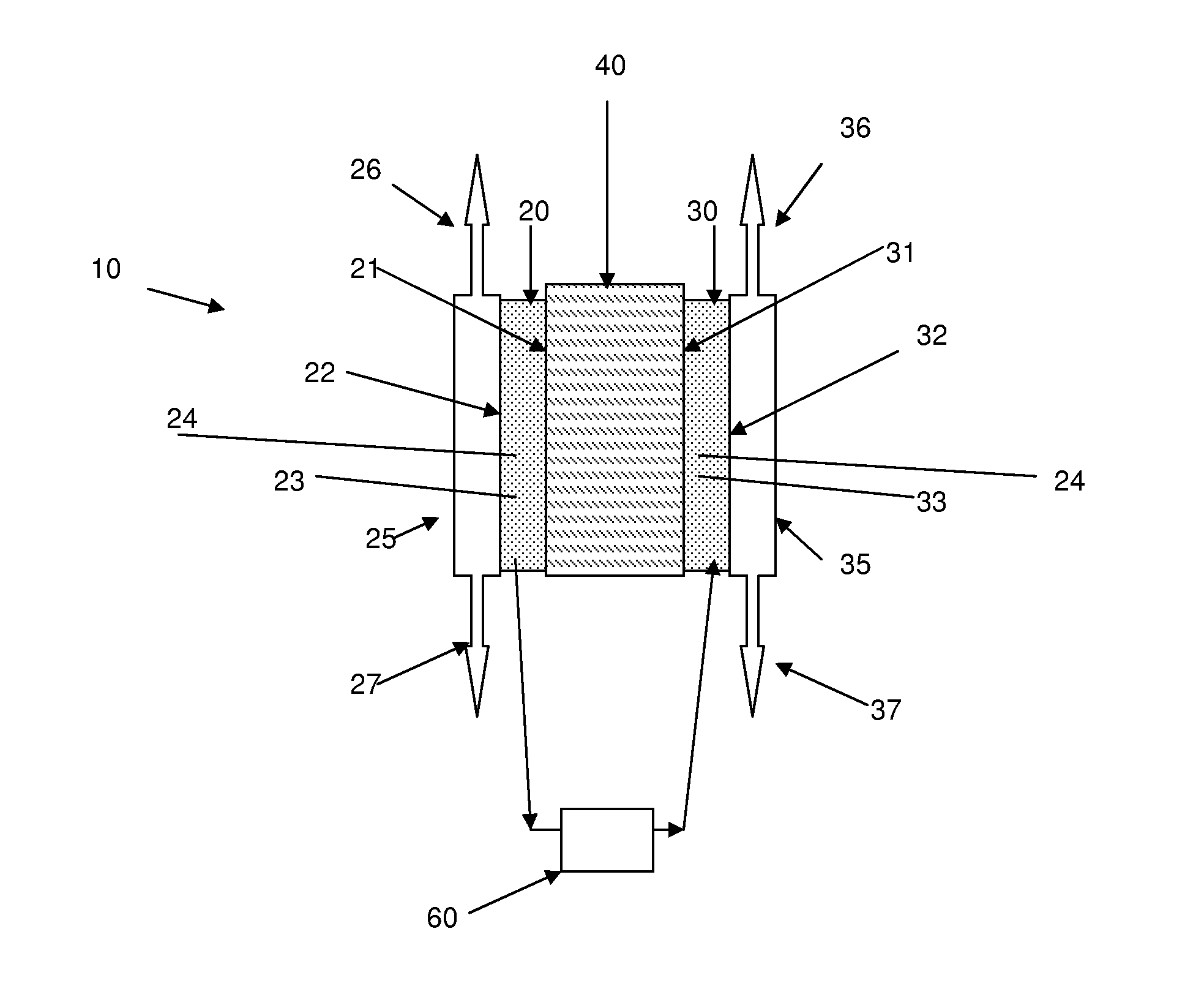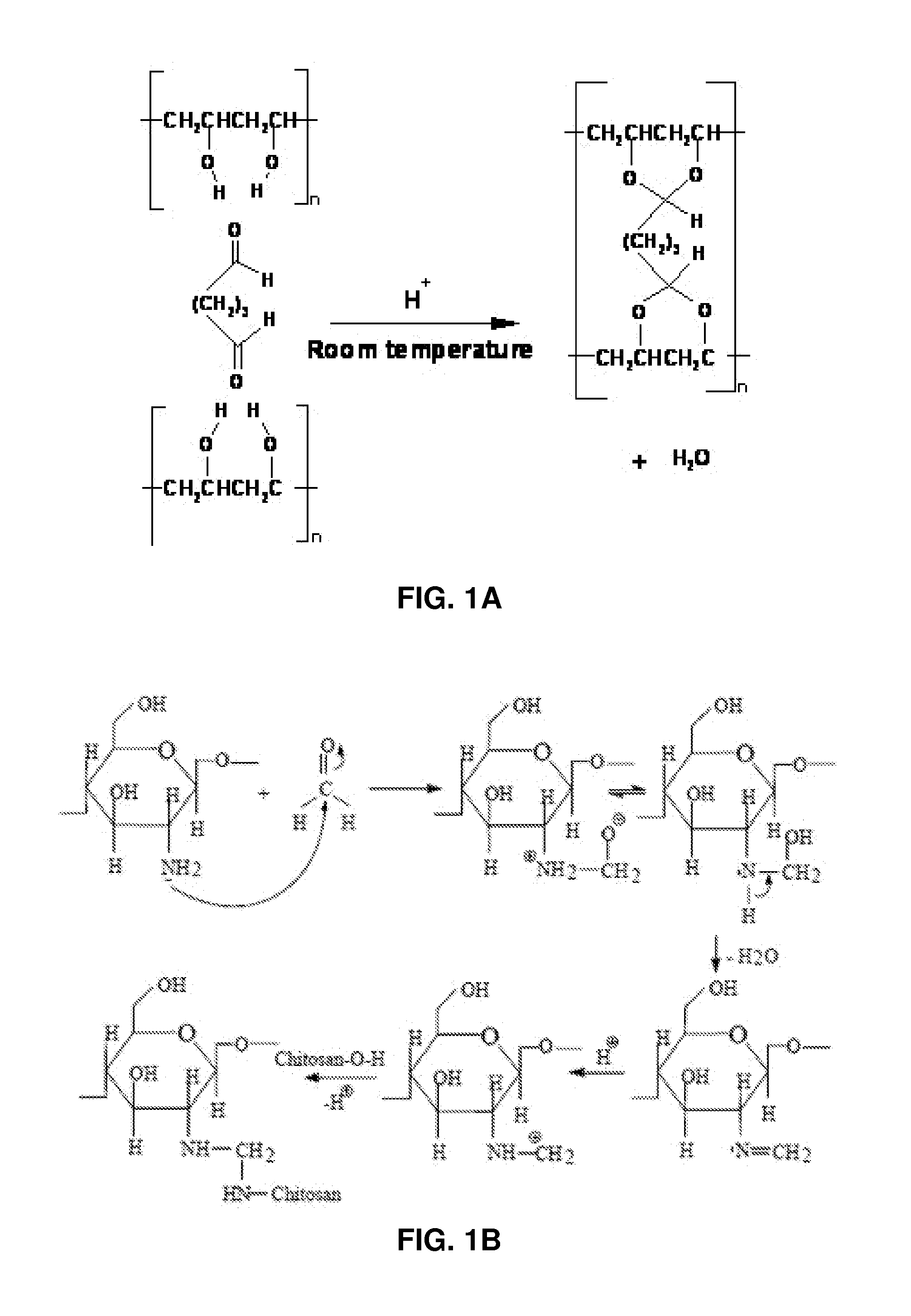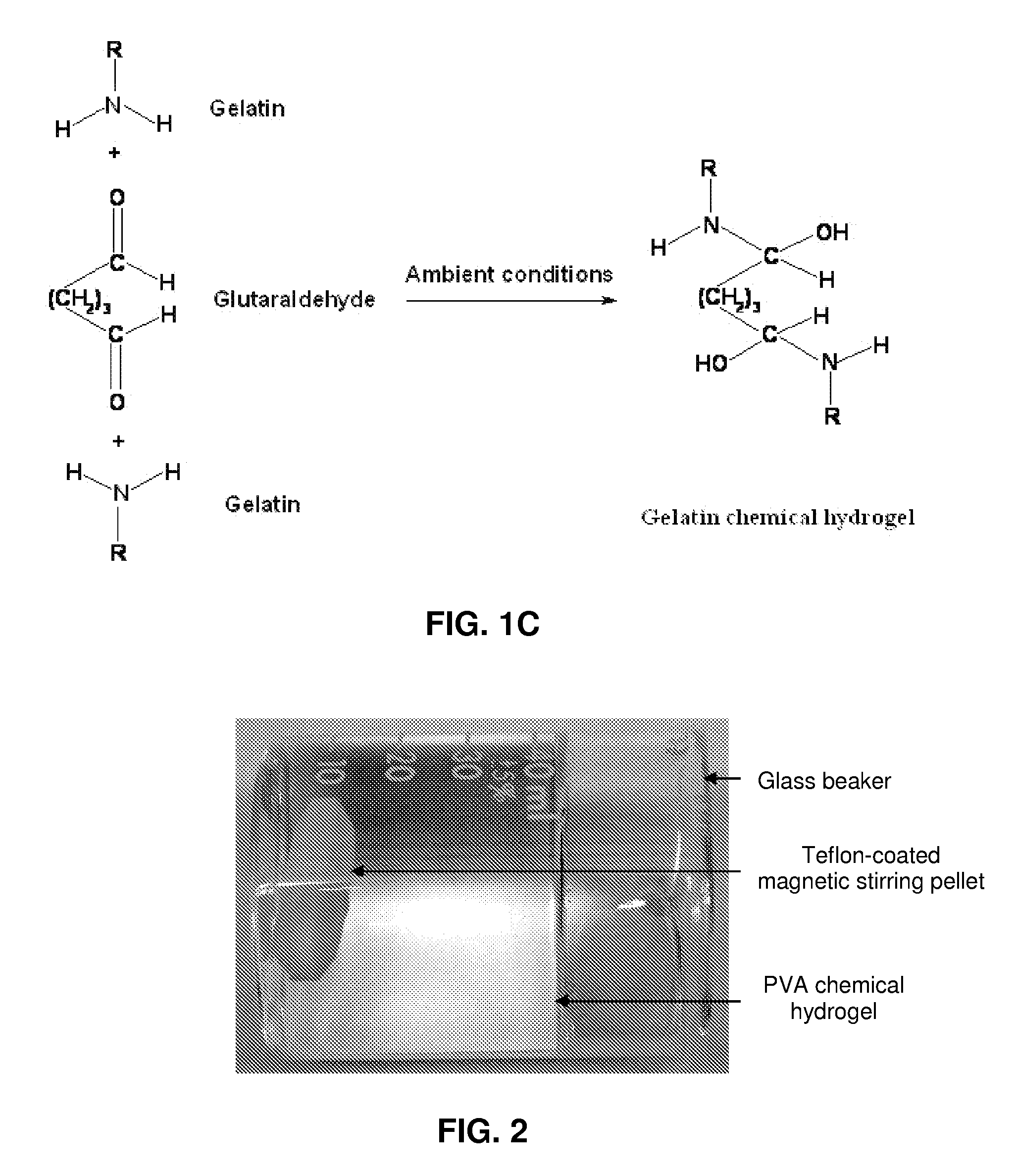CHEMICALLY LINKED HYDROGEL MATERIALS AND USES THEREOF IN ELECTRODES and/or ELECTROLYTES IN ELECTROCHEMICAL ENERGY DEVICES
a hydrogel material and chemical link technology, applied in the direction of organic compounds/hydrides/coordination complex catalysts, physical/chemical process catalysts, cell components, etc., can solve the problems of limited commercialization, inherently inefficient energy generation from petroleum oil and natural gas through combustion in a heat engine, and accompanied by environmental pollution
- Summary
- Abstract
- Description
- Claims
- Application Information
AI Technical Summary
Benefits of technology
Problems solved by technology
Method used
Image
Examples
example a
EXAMPLE A-1
Preparation of PVA Solution
An aqueous solution of polyvinyl alcohol (PVA) (0.05 or 0.1 g mL−1) was prepared by adding the required amount of PVA (95% hydrolyzed, MW: 95000, Across Organics) in a certain volume of de-ionized (DI) water in a glass beaker covered with a Petridis and magnetically stirring the contents in a boiling water bath for 12 h.
example a-2
Preparation of PVA and Glutaraldehyde Solution Mixture
A certain volume of a 0.05 or 0.1 g mL−1 aqueous solution of PVA was mixed with an optimized volume of 25% aqueous solution of glutaraldehyde (25% aq. Solution, Alfa Aesar) and the contents were stirred magnetically at ambient conditions of temperature and pressure for 12 hours.
In one embodiment, 20 mL of 0.05 g mL−1 or 10 mL of 0.1 g mL−1 aqueous solution of PVA was mixed thoroughly with 0.2 mL of 25% aqueous glutaraldehyde by stirring magnetically for 12 hours at ambient temperature. The mixture was allowed to remain still for 12 hours in order to allow the air bubbles to disappear from the viscous solution.
example a-3
Preparation of Nafion® Binder-Based Electrodes and Preparation of Water-Insoluble Chemical Hydrogel Binder-Based Electrodes (Anode and Cathode)
Anode Catalyst Ink
To prepare the anode catalyst ink, a desired amount of an AB5 alloy powder of weight percentage composition La10.5Ce4.3Pr0.5Nd1.4Ni60.0Co12.7Mn5.9Al4.7 (Ovonic Battery Company) was mixed thoroughly with 10 wt. % Vulcan XC 72® carbon powder in a glass vial. To this mixture, an adequate quantity of water was added and the suspension was agitated in an ultrasonic water bath (Bransonic® ultrasonic cleaner) for 2 hours.
Subsequently, a desired volume of Nafion® (5 wt. % solution, Ion Power Inc.) binder or a desired volume the PCH binder comprising an optimized aqueous solution mixture of PVA (0.05 g mL−1) and glutaraldehyde (25%), as prepared by a procedure described in Example A-2 above, was added drop wise to the suspension of AB5 alloy and Vulcan XC 72® carbon in water with ultrasonic agitation continued for another 2 hours. Th...
PUM
| Property | Measurement | Unit |
|---|---|---|
| operating temperatures | aaaaa | aaaaa |
| operating temperatures | aaaaa | aaaaa |
| operating-temperature | aaaaa | aaaaa |
Abstract
Description
Claims
Application Information
 Login to View More
Login to View More - R&D
- Intellectual Property
- Life Sciences
- Materials
- Tech Scout
- Unparalleled Data Quality
- Higher Quality Content
- 60% Fewer Hallucinations
Browse by: Latest US Patents, China's latest patents, Technical Efficacy Thesaurus, Application Domain, Technology Topic, Popular Technical Reports.
© 2025 PatSnap. All rights reserved.Legal|Privacy policy|Modern Slavery Act Transparency Statement|Sitemap|About US| Contact US: help@patsnap.com



